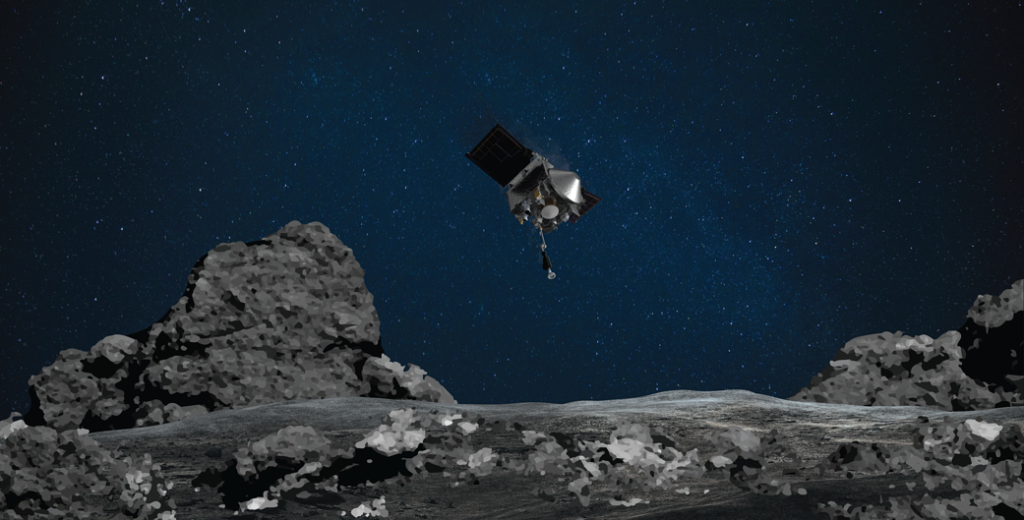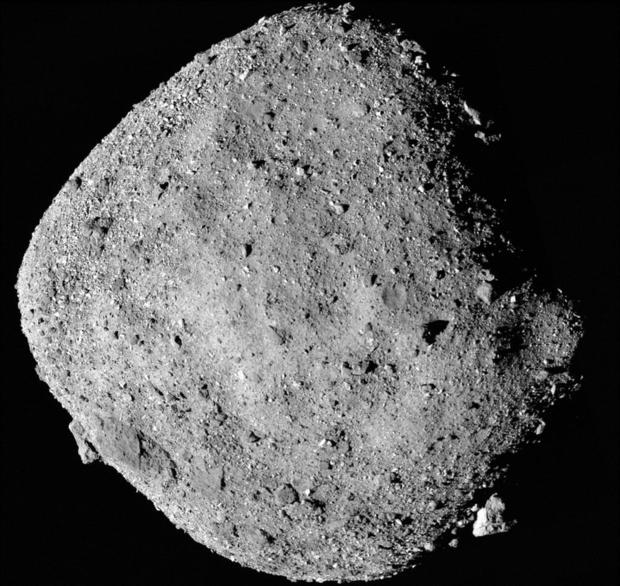
A NASA space capsule carrying a sample of rocky material taken from the surface of asteroid Bennu three years ago hurtles toward Earth, headed for a fiery plunge on Sunday.
The robotic spacecraft OSIRIS-REx has released the capsule with favorable weather forecast, NASA officials announced, and it will parachute land in the Utah desert at 27,650 mph.
Mission managers are expecting the capsule to touch down on the U.S. military’s Utah Test and Training range, west of Salt Lake City, said Sandra Freund, program manager at Lockheed Martin, which designed and built the spacecraft.

The small capsule carries a half-pound of rocks and dust from asteroid Bennu. They are leftovers from the formation of the solar system 4.5 billion years ago.
The small saucer-shape capsule will pass through extreme atmospheric friction that will rapidly slow the craft while subjecting its protective heat shield.
The capsule is protected from temperatures higher than 5,000 degrees Fahrenheit, as the capsule decelerates along a trajectory toward a 37-mile-long landing zone
The landing is scheduled at 10:55 a.m. EDT (14:55 GMT), about 13 minutes after streaking into the top of the atmosphere at an incredible 35 times the speed of sound, after a seven-year voyage.
The OSIRIS-REx mission, a joint effort between NASA and scientists at the University of Arizona, would mark the third asteroid sample, and by far the largest, ever returned to Earth for analysis.
This is the third mission of its kind after two similar missions by Japan’s space agency in 2010 and 2020.
Bennu is two times the size of the Eiffel Tower. Scientists put the odds of it striking Earth at 1-in-2,700 in the late 22nd century.
10 reasons asteroid Bennu is important
According to NASA, the Bennu mission is very important for the following reasons.
1. It’s close to Earth
Unlike most other asteroids that circle the Sun in the asteroid belt between Mars and Jupiter, Bennu’s orbit is close in proximity to Earth’s, even crossing it. The asteroid makes its closest approach to Earth every 6 years.
2. It’s the right size
Asteroids spin on their axes just like Earth does. Small ones, with diameters of 200 meters or less, often spin very fast, up to a few revolutions per minute. This rapid spinning makes it difficult for a spacecraft to touch down and collect samples.
3. It’s really old
Bennu is a leftover fragment from the tumultuous formation of the solar system. Some of the mineral fragments inside Bennu could be older than the solar system. These microscopic grains of dust could be the same ones that spewed from dying stars and eventually coalesced to make the Sun and its planets nearly 4.6 billion years ago.
4. It’s well preserved
Bennu is a time capsule from the early solar system, having been preserved in the vacuum of space. Although scientists think it broke off a larger asteroid in the asteroid belt in a catastrophic collision between about 1 and 2 billion years ago, they don’t expect that these events significantly altered it.
5. It might contain clues to the origin of life
Samples of Bennu will help planetary scientists better understand the role asteroids may have played in delivering life-forming compounds to Earth. We know it is carbon-rich. Carbon is the hinge upon which organic molecules hang.
6. It contains valuable materials
Besides teaching us about our cosmic past, exploring Bennu close-up will help humans plan for the future. Asteroids are rich in natural resources, such as iron and aluminum, and precious metals, such as platinum.
7. It will help us better understand other asteroids
Astronomers have studied Bennu from Earth since it was discovered in 1999. As a result, they think they know a lot about the asteroid’s physical and chemical properties. Their knowledge is based not only on looking at the asteroid, but also studying meteorites found on Earth.
8. It will help us better understand a quirky solar force …
Astronomers have calculated that Bennu’s orbit has drifted about 280 meters (0.18 miles) per year toward the Sun since it was discovered. This could be because of a phenomenon called the Yarkovsky effect, a process whereby sunlight warms one side of a small, dark asteroid and then radiates as heat off the asteroid as it rotates.
9. … and to keep asteroids at bay
One reason scientists are eager to predict the directions asteroids are drifting is to know when they’re coming too-close-for-comfort to Earth.
10. It’s a gift that will keep on giving
Samples of Bennu will return to Earth on September 24, 2023. OSIRIS-REx scientists will study a quarter of the regolith. The rest will be made available to scientists around the globe, and also saved for those not yet born, using techniques not yet invented, to answer questions not yet asked.
Sources: NASA, Reuters, CBS
See all the latest news from Greece and the world at Greekreporter.com. Contact our newsroom to report an update or send your story, photos and videos. Follow GR on Google News and subscribe here to our daily email!



